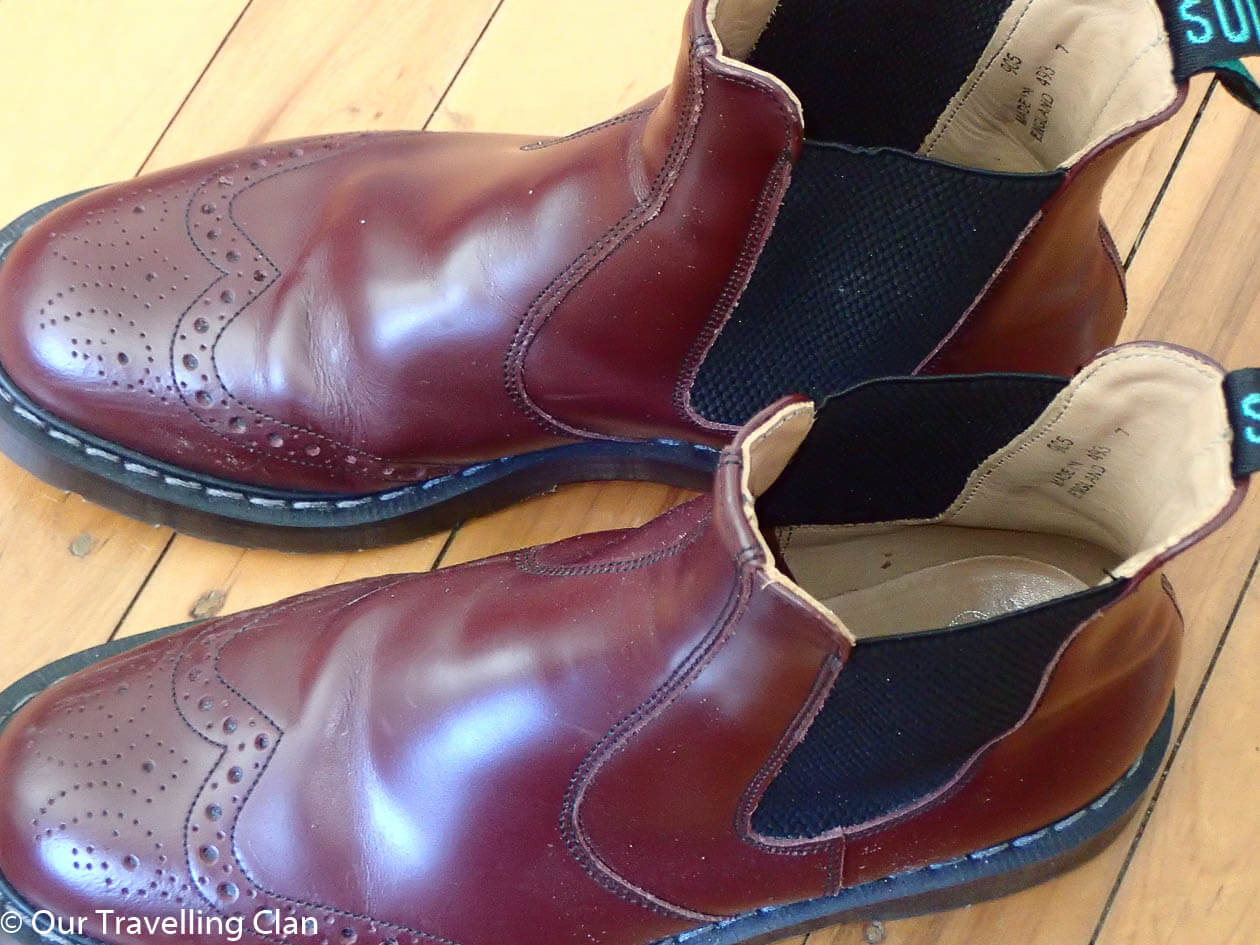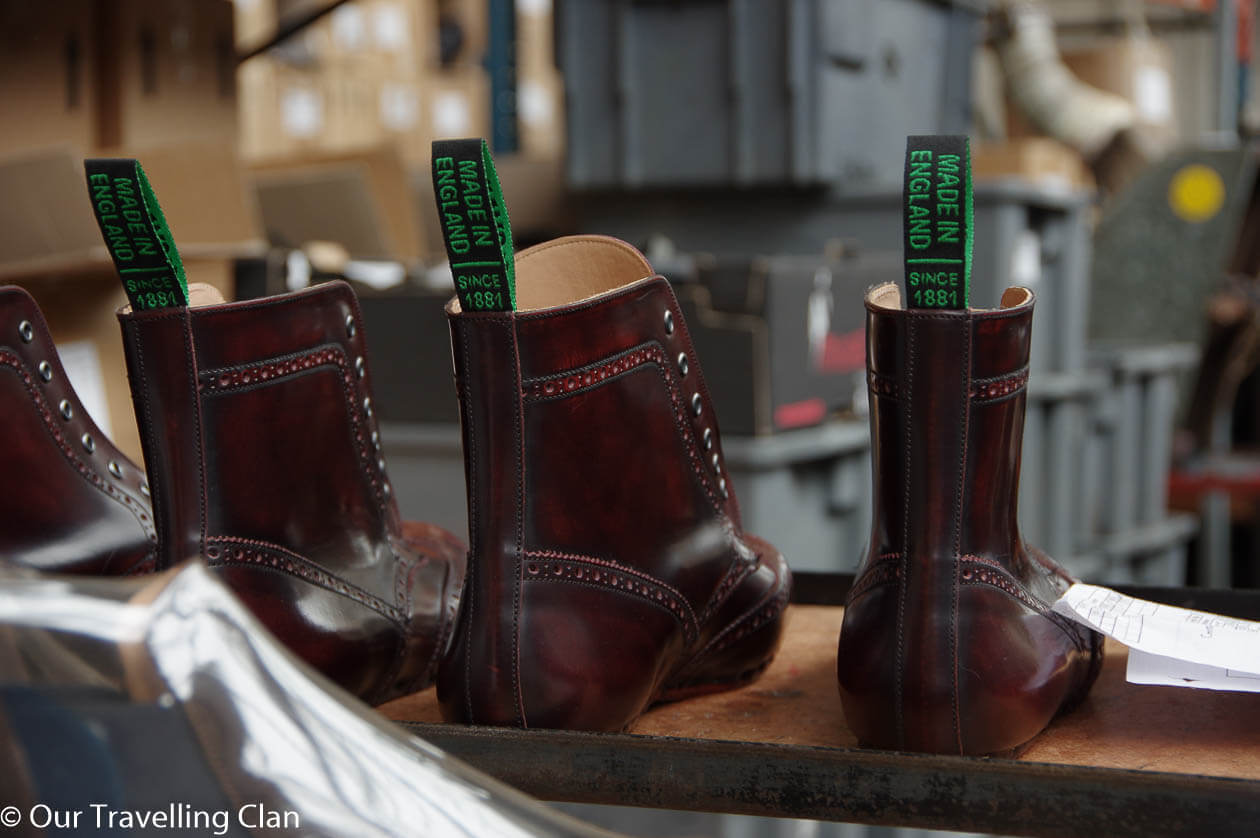One of the more unusual things we did on our travels was to visit NPS shoes in Wollaston, Northamptonshire.
For those of you who have seen Kinky Boots, you will know that Northamptonshire was the home of shoemaking in the United Kingdom.
What you may not know is that this tiny village, (according to Wikipedia its population at the 2011 census was less than 3,500) is the headquarters of Airwair, the owners of Doc Martens and the home of NPS shoes who helped develop the Airwear sole and produced Dr Martens boots and shoes under licence for 35 years sold.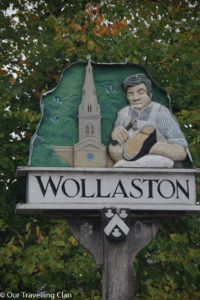
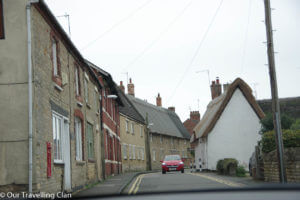

We found NPS ( Northamptonshire Productive Society Pty Limited) shoes by accident looking for the Doc Marten’s factory shop. When we were living in the Uk we had managed to get some bargain, “Made in England” shoes and wanted to grab some more whilst we were in the area. Unfortunately, most of the Doc Martens range are now made outside England.
Finding the tour
As we were looking on Google maps we discovered another shoe factory in the village. Mr OurTravellingClan noticed that although the factory was only open for tours twice per year, one of the days was when we would be leaving Birmingham for York. It was only slightly out of our way, so we sent an email to be signed up for the free tour.
On a rainy Saturday morning, we arrived in the village of Wollaston to find it was even smaller in real life than it appeared on the map. With tiny little single lane streets and thatched roof cottages, it was hard to believe it could be hiding two shoe factories. We had a quick stop at the Doc Marten factory shop where we found some cute shoes for the girls (not Made in England). Then arrived at the NPS factory shop to tea and biscuits before the factory tour.
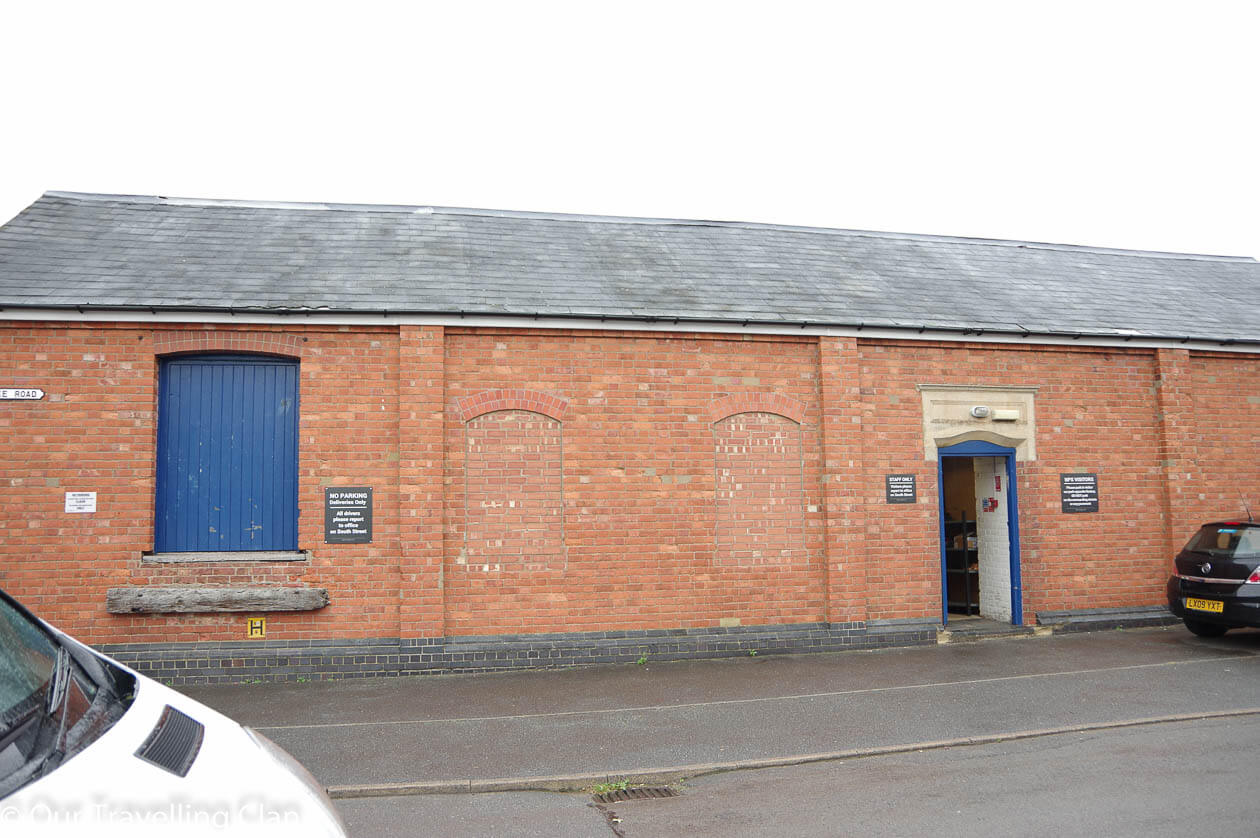
NPS Shoes
NPS shoes is now a family owned business bought from the co-operative in 2006. It was the son in law who conducted the tour of their “new factory” constructed in 1899 with a few additions in 1907 and the 1950’s. The factory was as it was left by the workers on Friday afternoon.
We were probably some of the youngest on the tour and certainly had the only children. Others in the group seemed to be familiar with the brand judging by their footwear.
The Tour
It was a fascinating tour starting with the Leather room filled from floor to ceiling with roll after roll of different colours and types of leather including vegan “leather”.
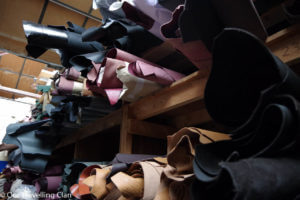
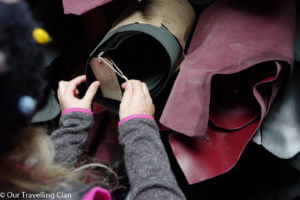
Our guide told us all about the steps and skills involved in making the shoes as well as some of the history of NPS shoes and shoemaking in Northamptonshire.
Due to all the forests for making lasts and tanneries around the Northamptonshire area, shoes have been made there for centuries.
History of NPS Shoes
It was 1959 when they were involved in the development of the Airwair sole for Dr Martens. They made shoes under licence until the 1990’s when Airwair moved most of its manufacturing overseas. At the peak Dr Martens had 36 shoe factories making under licence and had purchased many of them. When manufacturing moved overseas most of the other factories shut down.
What saved NPS shoes was that they were a co-operative formed between 5 workers in 1881 and the descendants hadn’t wanted to be bought out by Airwear. When they stopped making Doc’s under licence they luckily had other contracts to keep them going.
In the peak, they were making 5000 shoes per week, 250,000 per year. Now they make 1000 shoes per week. All processes are completed in the factory from start to finish. Each pair of shoes takes about 2 ½ hours and the boots have about 150 processes and take about 3 hr per pair.
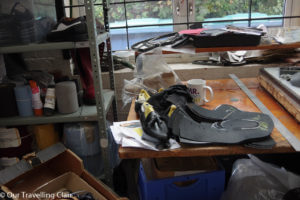
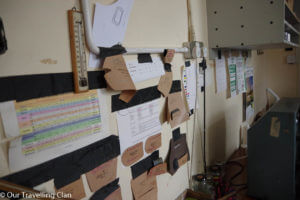
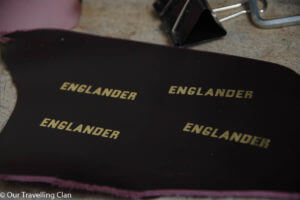
Our guide said that there is now only about 3 or 4 factories who actually make shoes and boots from start to finish in the UK. Many of the companies that claim to have been made in England are actually getting some of the components from overseas.
It was interesting to hear about the unique skills each worker requires for the different processes such as the “Clicker” who has to know which part of the leather to use to avoid imperfections, minimise waste, stretch in the right directions over the lasts and have the strength required.
It was about a 2-hour tour following every stage of the process, through “Goodyear welting” the soles on right up to the finished boots then back to the factory shop where we were offered more tea and biscuits.
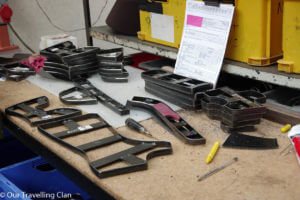
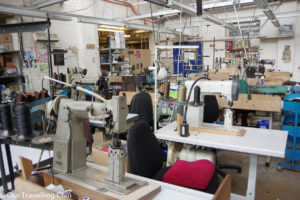

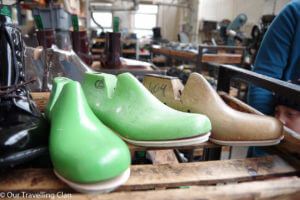 The girls were also found most of it interesting enough. They did very well to avoid the temptation to touch all the work equipment left out on the benches.
The girls were also found most of it interesting enough. They did very well to avoid the temptation to touch all the work equipment left out on the benches.
The minimum age for the tour was 6 but no one questioned our 5 year old and we told her it was because she was so well behaved.
There was talk while we were there that the tours were becoming more popular and that there was a possibility they would open up more than twice a year in future.
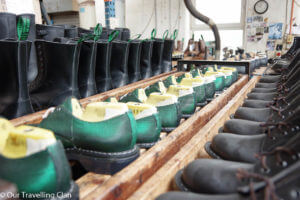
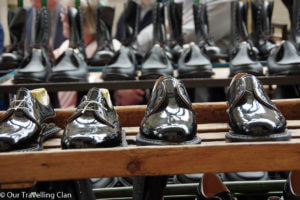
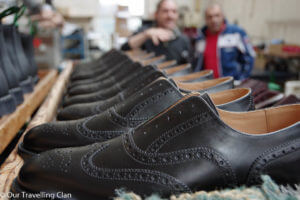
After seeing all the processes I was pleased to find a great pair of boots in the factory store to take home. Unfortunately, my bag wasn’t as pleased to see them but that is another story.
